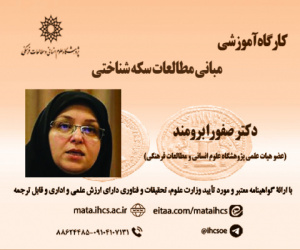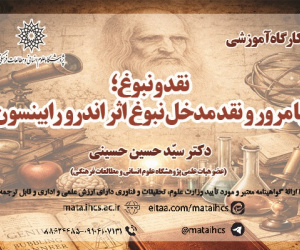مبانی درست نویسی در زبان فارسی معیار (مقاله علمی وزارت علوم)
درجه علمی: نشریه علمی (وزارت علوم)
آرشیو
چکیده
بحث از خطاهای زبانی و تمرکز بر اصلاح خطاهای نوشتار از موضوعاتی است که در بسیاری از کتاب های ویرایش و نگارش مطرح شده است. در این کتاب ها بدون توجه به مبانی درست نویسی، خطاهای زبانی مطرح شده و در نتیجه اظهارنظرهای شخصی و سلیقه ای بسیاری در این کتاب ها راه یافته است. این درحالی است که هرگونه بحث درباره درست نویسی مستلزم تبیین اصول و مبانی آن است. نظر به نبودِ بحث روشمند در حوزه مبانی درست نویسی، در این پژوهش کوشش می شود ضمن مرور و نقد دیدگاه های ابوالحسن نجفی، خسرو فرشیدورد، میرشمس الدین ادیب سلطانی و ناصرقلی سارلی معیارهایی برای درست نویسی پیشنهاد شود. نتایج این بررسی نشان می دهد یکی از نکات بسیار مهم که در تبیین مبانی درست نویسی به آن اهمیت داده نمی شود، توجه به سبک ها و گونه های مختلف زبان است. زبان معیار گونه های مختلفی دارد که از بین آنها گونه اداری، رسانه ای، ادبی و علمی شناخته شده تر است. با توجه به اینکه موضوع کلام و نیز مخاطب در هریک از این گونه ها با گونه های دیگر متفاوت است، لازم است در تدوین اصول درست نویسی به این تفاوت ها توجه شود. همچنین، ضروری است در تدوین قواعد درست نویسی به تحولات زبان در ادوار زبانی مختلف و نیز گفتار توجه شود. بسیاری از الگوهای زبانی و گفتاری به تدریج به برخی از گونه های نوشتاری راه می یابد. پراکندگی ها و نبودِ معیارهای صریح در پژوهش های پیشین منجر به پیشنهاد معیارهایی برای درست نویسی در این پژوهش شد. این معیارها عبارت است از: 1. سره گرایی؛ توجه به ویژگی های صرفی، نحوی و آوایی زبان فارسی؛ 2. توجه به روابط معنایی اجزای جمله و انتقال معنا؛ 3. اقتصاد زبانی یا کم کوشی؛ 4. پیشینه زبان و انطباق گفتار و نوشتار. لازم است این معیارها در کنار هم و با توجه به تفاوت ها و تنوعات زبانی در نظر گرفته شود.Basics of Orthography in Standard Persian
The discussion of linguistic errors and the focus on correcting writing mistakes are common themes in many editing and writing guides. However, these resources often present linguistic errors without adequately addressing the fundamentals of orthography, leading to the inclusion of numerous subjective and personal comments. A comprehensive discussion of orthography necessitates an explanation of its underlying principles and foundations. This study aimed to establish criteria for orthography while critically reviewing the perspectives of Abolhassan Najafi, Khosrow Farshidvard, Mirshams-eddin Adib Soltani, and Nasergholi Sarli. The findings indicated that a crucial aspect often overlooked in the discussion of orthography was the acknowledgment of various styles and types of language. Among the recognized language varieties were administrative, media, literary, and scientific styles. Given the distinct subject matter and audiences associated with each type, it is essential to consider these differences when formulating orthographic principles. Additionally, attention must be paid to the evolution of language across different linguistic periods and the advancements in spoken language. Due to the fragmentation and lack of clear, definitive criteria in prior research, this study proposed a set of criteria for orthography. Keywords: Orthography, Standard Persian, Orthography Basics, Language Editing. IntroductionThe importance of "correct writing" is a common theme in many writing and editing books. Most of these texts offer guidance for enhancing writing by identifying linguistic errors. However, they often suffer from issues, such as disorganized content, subjective commentary, imposition of rigid criteria without considering different styles and contexts, and a lack of consistent methodology. These problems largely stem from a neglect of the fundamental principles of orthography. Until clear and uniform principles for orthography are established, we will likely continue to see a diversity of opinions and practices in this area.Given the absence of a scientific and methodical discourse on the basics of orthography, this study aimed to address the following questions:What criteria for orthography have been proposed in previous research?On what basis are the orthography criteria for a standard language determined?How can we suggest indicators for correct writing across various linguistic varieties?Some studies have, albeit sporadically, focused on the characteristics of standard language and relevant linguistic-structural issues concerning correctness. For instance, Ali Ashraf Sadeghi (1983) has generally discussed the concepts of correctness and incorrectness in linguistic forms. Ali Mohammad Haqshenas (1994) has explored the social roots of linguistic correctness, critiqued the educational system's flawed approach to language, and emphasized the importance of properly teaching calligraphy and writing style, as well as the challenges posed by orthography in elementary education. Zahra Zandi Moghaddam (2017) has provided a critique of "Bibliography of Right and Wrong in Language" authored by Ahmad Khandan. Materials & MethodsThis study aimed to review and critique the perspectives of Abolhassan Najafi, Khosrow Farshidvard, Mir Shams-eddin Adib Soltani, and Nasergholi Sarli while proposing criteria for orthography. Consequently, the methodology employed was both descriptive and analytical. Research FindingsThe studies revealed that existing sources, including books and articles on the topic of correctness in language—published under titles, such as "Standard Language", "Writing and Editing Rules", "Correct Writing", and "Let's Write Better"—lack a clear basis for determining right and wrong in standard language. With the exception of a few style guides, most authors focused solely on examples of linguistic and structural editing, such as the removal of clauses, deletions, foreign words, grammatical errors, excessive length, consecutive verbs, verb omissions, use of Arabic words in Persian, stereotypical expressions, slang, inadequate expressions, incorrect verb usage, failure to properly observe sentence components, and incoherence in sequential sentences. Notable scholars, including Abolhasan Najafi, Nasergholi Sarli, Khosrow Farshidvard, and Mir Shams-eddin Adib Soltani, had proposed specific, categorized, or general principles and criteria for correctness in standard language.Najafi's perspective was moderate; while he considered the history of language and established rules for correctness, he also acknowledged the evolution of spoken language. Conversely, Adib Soltani's approach did not account for spoken language, thereby overlooking its intrinsic qualities. Farshidvard adopted a prescriptive stance, asserting that the correctness of speech was contingent upon adherence to grammatical rules. In contrast, Sarli emphasized the communicative aspects of language, focusing on the effectiveness and adequacy of linguistic patterns in conveying meaning. A reflection on these perspectives indicated that some proposed criteria might not be universally applicable across all linguistic varieties. Discussion of Results & ConclusionA critical aspect that has not been adequately addressed in the discussions of orthography is the consideration of different styles and varieties of language. Standard language encompasses various forms, including administrative, media, literary, and scientific styles. Each of these types has distinct subject matter and audiences, making it essential to account for these differences when establishing principles of orthography. Many editing and discussion books on orthography have been created without regard for these variations. This study identified existing shortcomings and proposed criteria for orthography that included: consistency, attention to the morphological, syntactic, and phonetic features of the Persian language, consideration of the semantic relationships among sentence components and meaning transfer, linguistic economy, and acknowledgment of the historical evolution of language alongside the adaptation of speech and writing.









